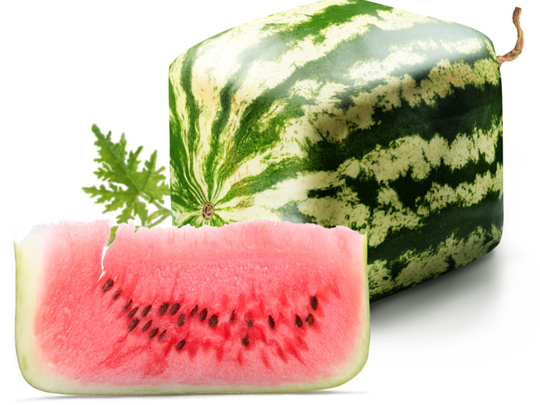
It’s human nature, it seems, to resist change and fear the unknown. So it is no surprise that genetic engineering of food and feed crops resulted in their resounding condemnation as “Frankenfoods” by many consumers, who seem as terrified of eating an apple with an added anti-browning gene or a pink pineapple genetically enriched with the antioxidant lycopene.
Trek down the grocery aisles of any large market and you’ll find many products prominently labelled “No GMOs.” It’s much harder to spot the small print on many other foods stating “Partially produced with genetic engineering,” a result of a 2016 US federal law that mandated uniform labeling of all food products containing genetically engineered ingredients.
Though the public has the right to know an honest labeling of all products, in an important way, it is very misleading. Farmers and agricultural scientists have been genetically engineering the foods we eat for centuries through breeding programs that result in large and largely uncontrolled exchanges of genetic material. What many consumers may not realise: For many decades, in addition to traditional crossbreeding, agricultural scientists have used radiation and chemicals to induce gene mutations in edible crops in attempts to achieve desired characteristics.
In the decades since genetically modified foods came to market, no adverse health effects among consumers have been found. This is not to say there are none, but as hard as opponents of the technology have looked, none have been definitely identified.
Although about 90 per cent of scientists believe GMOs are safe - a view endorsed by the American Medical Association, the National Academy of Sciences, the American Association for the Advancement of Science and the World Health Organisation - only slightly more than a third of consumers share this belief.
The fears of GMOs are still theoretical, like the possibility that insertion of one or a few genes could have a negative impact on other desirable genes naturally present in the crop.
Common concerns - none of them clearly demonstrated - are unwanted changes in nutritional content, creation of allergens and toxic effects on bodily organs. According to an interview in Scientific American with Robert Goldberg, a plant molecular biologist at the University of California, Los Angeles, such fears haven’t been quelled despite “hundreds of millions of genetic experiments involving every type of organism on earth and people eating billions of meals without a problem.”
The bottom line: Consumers concerned about the growing use of GMOs in the foods they depend on might consider taking a more nuanced approach than blanket opposition. Rather than wholesale rejection, take some time to learn about how genetic engineering works and the benefits it can offer now and in the future as climate change takes an ever greater toll on food supplies. Consider supporting efforts that result in safe products that represent improvements over the original and focusing opposition on those that are less desirable.
Benefits
A number of impressive benefits of GM foods have been well established.
Both effects most likely stem from the genetically engineered resistance to a major insect pest, the western corn rootworm, which damages ears of corn and allows fungi to flourish. By engineering resistance to insect damage, farmers have been able to use fewer pesticides while increasing yields, which enhances safety for farmers and the environment while lowering the cost of food and increasing its availability.
Increasing food yield: Wider adoption of genetic engineering, especially in African and Asian countries that still spurn the technology, could greatly increase the food supply in areas where climate change will increasingly require that crops can grow in dry and salty soils and tolerate temperature extremes. It continues to be distressingto know of the resistance to Golden Rice, a crop genetically engineered to supply more vitamin A than spinach that could prevent irreversible blindness and more than 1 million deaths a year.
Building health benefits into everyday foods: In addition to pink pineapples containing the tomato-based antioxidant lycopene, tomatoes are being engineered to contain the antioxidant-rich purple pigment from blueberries.
Boosting protein content: People in developing countries faced with famine and malnutrition are likely to benefit from attempts to improve the protein content of food crops, as well as the amount of vitamins and minerals they provide.
The labelling game
Food makers in the US will be required by federal law to use labels for GMO foods, starting 2020.
Here are a few answers to questions about the proposed labels.
What is a GMO?
The term stands for “genetically modified organism,” and it has traditionally referred to plants and animals created by altering genes with laboratory techniques in ways that conventional forms of breeding can’t, often by inserting genetic material from one species into another.
A gene from a soil bacterium, for instance, makes soybeans immune to a widely used weed killer. A type of papaya has been modified to be resistant to a crippling virus, and corn has been rendered resistant to insects that attack it.
Why are these guidelines being proposed now?
Major food manufacturers have fought long and expensive battles against GMO labels, worried they would deter customers - and give an advantage to organic food makers.
In recent years, legislators and consumer groups have stepped up efforts to pass labeling laws.
What will the proposed labels say?
Instead of the commonly used but somewhat stigmatised terms “GMO” and “genetically engineered,” the guidelines propose labels that say “bioengineered” or “BE.” Food makers would be given a choice of three disclosure methods: spelling out the information, as in “contains a bioengineered food ingredient”; using a standard icon (the agency proposed several evoking sun and smiles); or affixing a QR code that directs consumers to a website with more information.
Do the labels cover all genetically engineered foods?
No. New gene-editing technologies let scientists tweak the DNA of plants and animals with great speed and precision, often by deleting a snippet of genetic information, or by inserting a desirable trait from one breed into another of the same species. Crops that contain such changes, which could theoretically be achieved through conventional breeding, or occur through a natural mutation, are excluded from the proposed labels.
The labels may also exempt highly refined sugars and oils, like those made from genetically modified sugar beets and corn, which typically contain no genetic material after being processed. Consumer groups oppose that move, which could significantly curtail the number of foods that carry the label, saying that it’s not just what we ingest that matters but how food is produced. Foods whose primary ingredient is non-GMO meat, like beef stew, also don’t have to be labeled, even if they contain other genetically engineered ingredients.
Is this a done deal?
Not yet. The public has until July 3 to comment on the proposed guidelines.
Agencies












